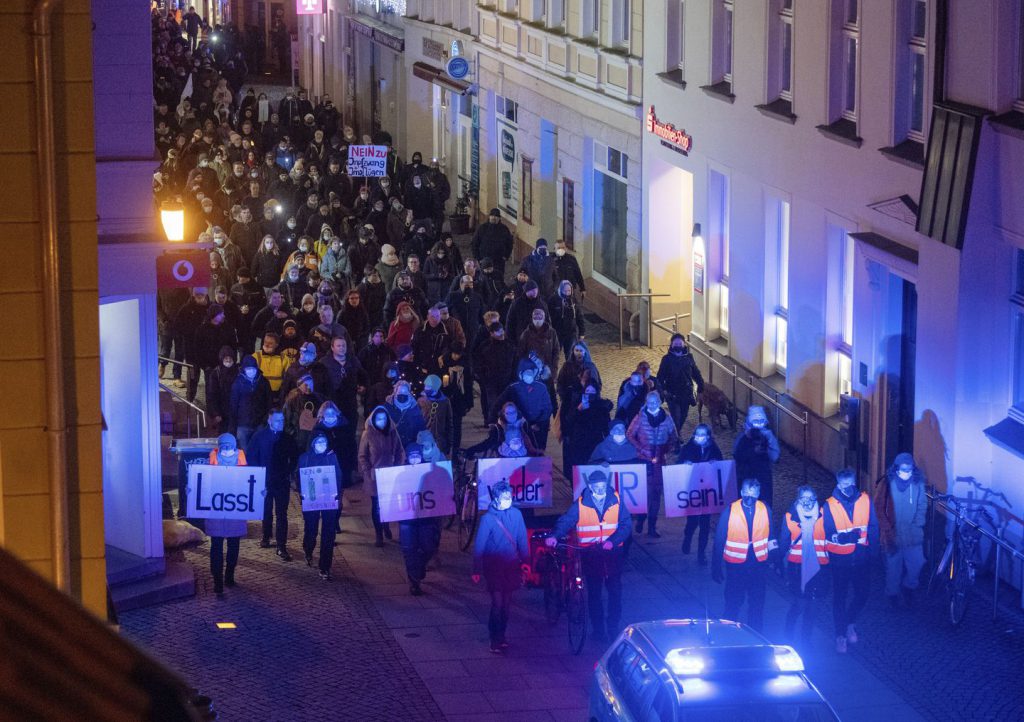Police in Germany have reported intermittent violence during protests against the country’s pandemic restrictions, with one demonstrator biting an officer and another attempting to take a service weapon in the eastern town of Lichtenstein.
In an attempt to circumvent limits on public meetings, tens of thousands of people took to the streets in hundreds of German towns and cities for weekly marches dubbed “strolls” by organizers.
According to the dpa news agency, counter-protests were staged in locations such as Rostock and Trier.
The majority of the gatherings were peaceful, but some of them disregarded social distance norms, requiring cops to interfere.
The incident happened late Monday in Lichtenstein, some 20 kilometers (12 miles) west of Chemnitz, when policemen sought to take approximately 60 boisterous individuals out of a march to verify their identification, according to police in the eastern state of Saxony. Several protestors assaulted police officers, spraying them with irritants.
“One person attempted to take an officer’s service weapon, and another police officer was bitten by a gathering participant,” Saxony police said in a statement.
Some marchers from a 600-strong march in Bautzen, farther east, attempted to break past a police barricade. Officers used pepper spray and batons in their response.
Protesters threw bottles and pyrotechnics at police in Magdeburg, the capital of the neighboring state of Saxony-Anhalt. According to authorities, no policemen were hurt.
The demonstrations took place ahead of a meeting of Germany’s pandemic expert group on Tuesday, which is scheduled to provide new suggestions to the government on how to deal with the epidemic. Friday is the day of a gathering of state and federal officials.
The Robert Koch Institute, the nation’s disease control center, stated Tuesday that 30,561 new coronavirus cases were detected in the previous 24 hours, up from 9,000 a week earlier. Over the last week, the official infection rate was 239.9 new infections per 100,000 inhabitants.
Because of spotty testing and reporting throughout the holiday period, the true rate is likely two or three times higher, according to the health minister.
